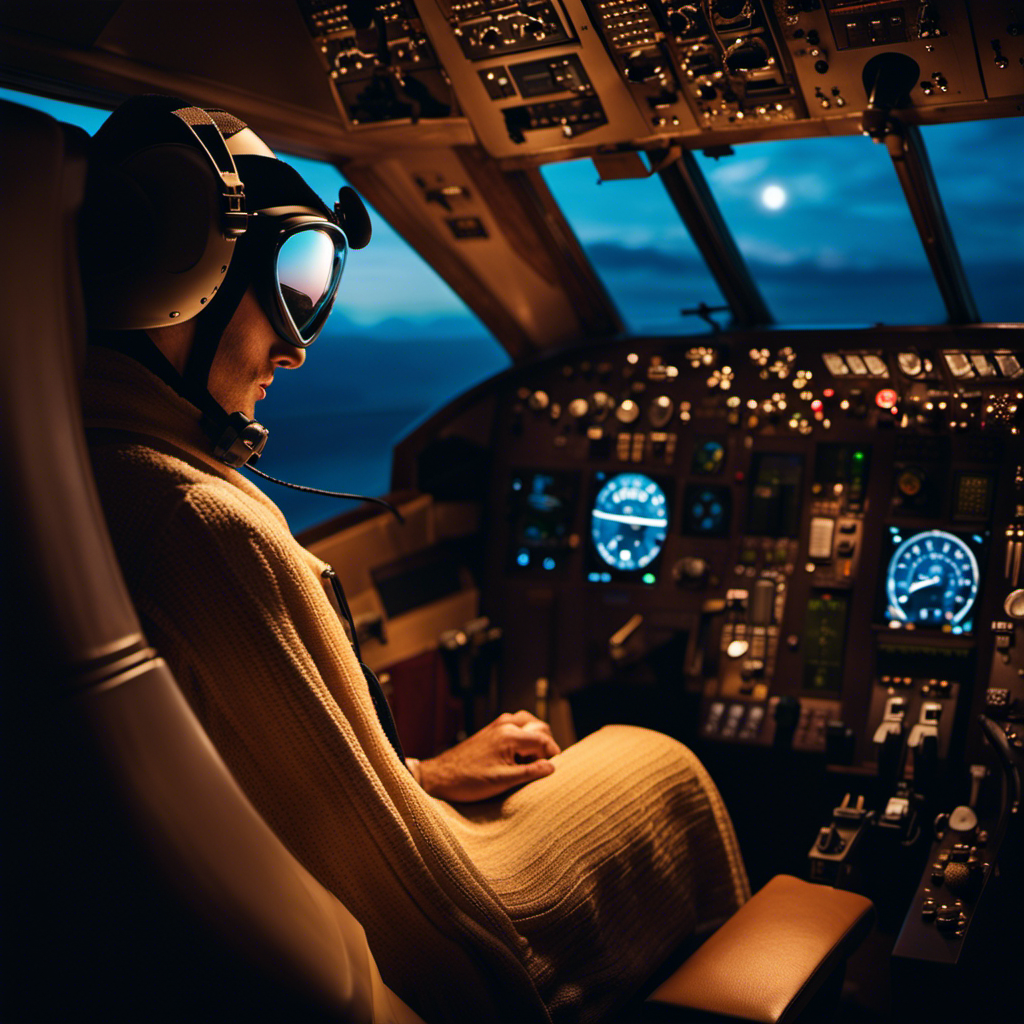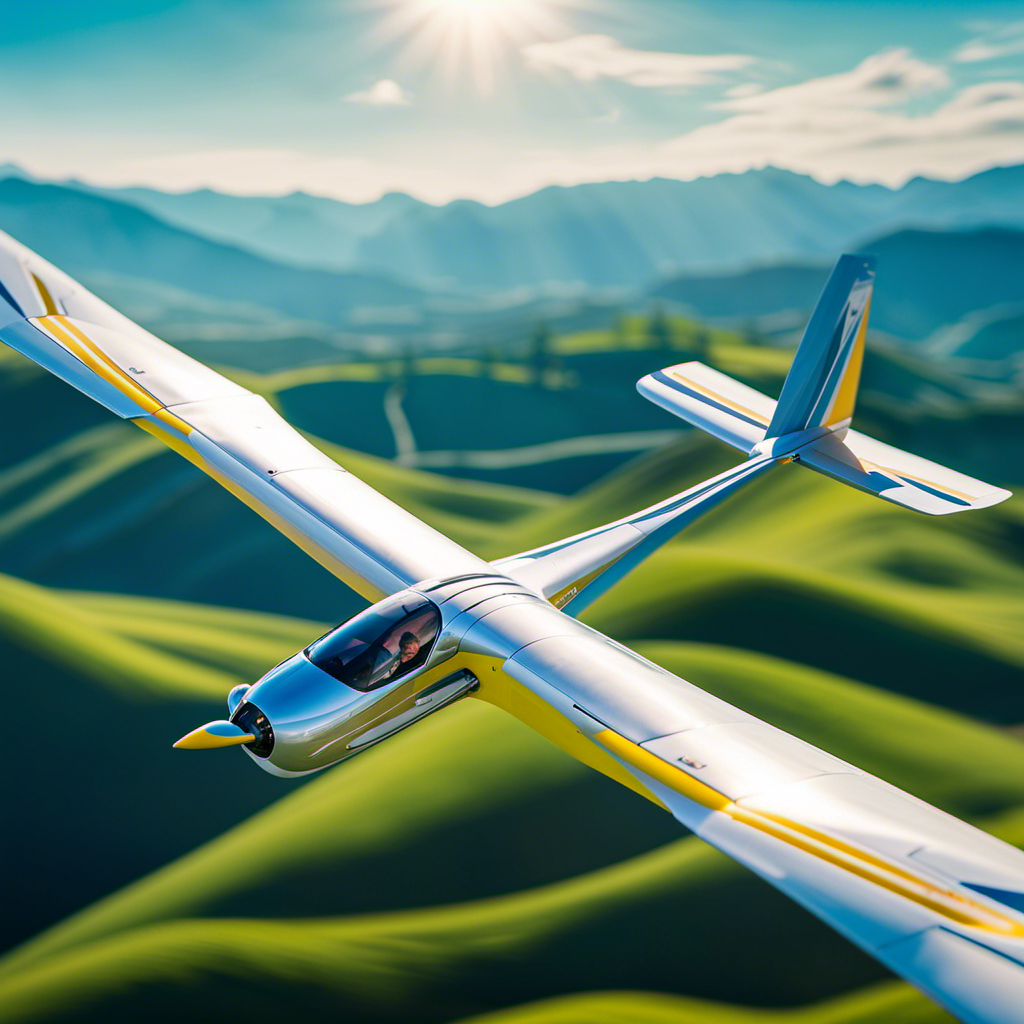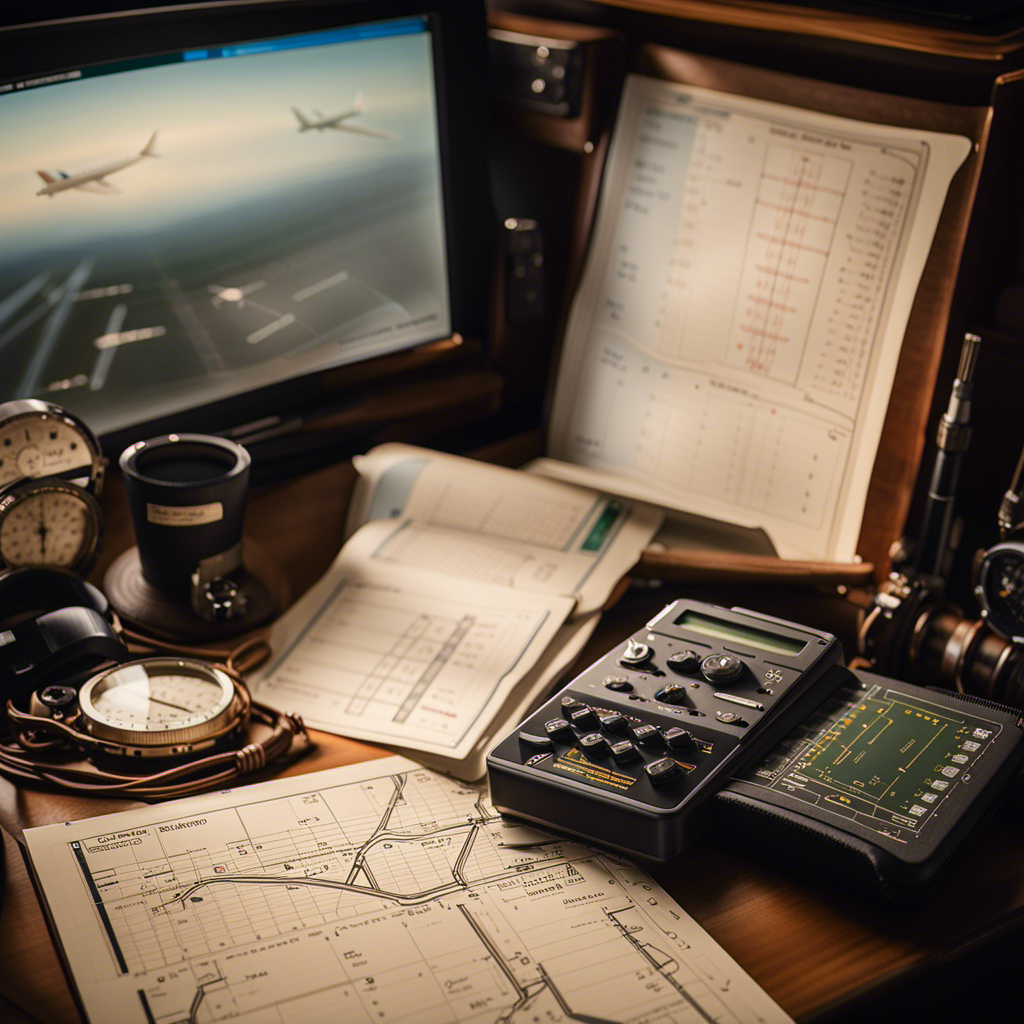Imagine this situation: you are soaring above the earth in an airplane when suddenly the engines fail. Fear sets in as you realize the plane has lost its power source. But worry not. Let me reassure you that it is entirely feasible for a plane to safely land by gliding through the air. In fact, this skill is a fundamental requirement for all pilots.
In this article, we’ll explore the fascinating world of gliding landings, the physics behind them, and the importance of proper training. So fasten your seatbelts, and let’s dive into the world of gliding!
Key Takeaways
- Gliding relies on aerodynamic principles and the balance of lift and drag forces.
- Factors such as weight, wing design, and air density affect glide ratio and performance.
- Pilot training and techniques, including trimming the aircraft and managing energy, are crucial for safe and controlled gliding landings.
- Gliding can be a lifesaving technique in emergency situations, such as engine failure, and has the potential to improve aviation safety and sustainability.
How Gliding Works
To understand how gliding works, you’ll need to know about air currents and how they affect the plane. The physics of gliding is fascinating.
When the engine fails, a glider pilot must rely on the principles of aerodynamics to maintain control and sustain flight. Gliding involves utilizing the natural forces of lift and drag to stay aloft. By carefully manipulating the aircraft’s control surfaces, such as the ailerons and elevators, the pilot can adjust the angle of attack and control the glide path.
Emergency procedures for engine failure are crucial. Pilots must quickly assess the situation, find a suitable landing spot, and execute a controlled descent. Understanding the physics of gliding is essential for pilots to make informed decisions and safely land the aircraft without engine power.
The Physics of Gliding
You can understand the physics behind how a plane stays in the air by gliding. Gliding relies on the fundamental physics principles of aerodynamic forces.
Two main forces are involved: lift and drag. Lift is generated by the shape of the wings and the flow of air over them, while drag is the resistance encountered as the plane moves through the air.
When a plane glides, it balances these forces to maintain a steady descent. The angle of attack, or the angle between the wings and the oncoming airflow, determines the lift and drag forces. By adjusting the angle of attack, a pilot can control the glide path and maintain the desired descent rate.
Understanding these physics principles is essential for a safe and controlled glide.
Now, let’s explore the factors affecting a plane’s glide ratio.
Factors Affecting a Plane’s Glide Ratio
The glide ratio of a plane is influenced by various factors such as weight, wing design, and air density. These factors play a crucial role in determining how far a plane can glide without power.
Weight affects the glide ratio because a heavier plane will have a higher sink rate and a lower glide ratio.
Wing design also plays a significant role, as planes with longer and narrower wings tend to have better glide ratios.
Additionally, air density affects a plane’s glide ratio because denser air provides more lift, allowing the plane to glide further.
Overcoming these challenges is essential for a successful gliding landing. By understanding and optimizing these factors, pilots can maximize their glide ratios and increase the chances of a safe and controlled landing.
Importance of Pilot Training in Gliding Landings
Mastering the techniques of gliding landings requires comprehensive pilot training to ensure safe and controlled descents. Pilot proficiency in executing glide landings is crucial for emergency response situations, where the ability to safely land a plane without engine power can mean the difference between life and death.
In these scenarios, pilots must rely on their knowledge and skills to assess the situation, choose the appropriate landing site, and execute a successful glide landing. Proper training ensures that pilots understand the aerodynamic principles governing gliding landings, can accurately estimate glide ratios, and possess the necessary skills to control the aircraft during the descent. Without this training, pilots may struggle to make informed decisions and respond effectively in emergency situations.
Transitioning to the subsequent section on techniques for executing a successful glide landing, let’s explore the key factors that contribute to a safe and controlled descent.
Techniques for Executing a Successful Glide Landing
To execute a successful glide landing, it’s important to maintain a steady descent rate and carefully monitor your altitude. Here are three pilot techniques and landing procedures that are crucial for a smooth glide landing:
-
Trim: Adjust the aircraft’s trim to achieve the desired glide speed. This helps maintain a stable descent rate and reduces the risk of stalling.
-
Flap Configuration: Select the appropriate flap setting for your aircraft. The specific setting will depend on factors such as weight, wind conditions, and runway length. The correct flap configuration ensures optimal lift and control during the glide approach.
-
Energy Management: As you approach the landing area, manage your energy by adjusting the pitch and power. This involves reducing the throttle to idle and using small pitch adjustments to control the glide. Careful energy management ensures a smooth touchdown at the desired spot.
By mastering these pilot techniques and landing procedures, a successful glide landing can be accomplished.
In the event of engine failure, these skills become even more crucial as emergency procedures for engine failure must be implemented seamlessly.
Emergency Procedures for Engine Failure
If you experience engine failure, you’ll need to quickly assess the situation and follow the emergency procedures to ensure your safety. Pilot training emphasizes the importance of being prepared for such scenarios.
Safety measures must be taken into account, including maintaining control of the aircraft, declaring an emergency with air traffic control, and executing the appropriate checklist for engine failure. The pilot must promptly identify the cause of the failure, such as a fuel system issue or mechanical problem, and attempt to restart the engine if possible. If restarting is unsuccessful, the pilot must initiate a glide descent to a suitable landing area.
By following these emergency procedures, pilots can increase their chances of a successful outcome in the event of engine failure.
In case studies of successful glide landings, pilots have demonstrated their ability to safely bring the aircraft down to the ground without engine power.
Case Studies of Successful Glide Landings
In successful glide landings, pilots have shown their capability to safely bring the aircraft to the ground without engine power. Gliding can be a viable option in emergency situations, allowing pilots to maintain control and make a controlled descent. Let’s take a look at some case studies that highlight the benefits of gliding:
| Case Study | Aircraft Type | Outcome |
|---|---|---|
| 1 | Cessna 172 | Successful landing on a grass field |
| 2 | Boeing 737 | Safely landed on a runway after engine failure |
| 3 | Piper PA-28 | Landed on a road with minimal damage |
These case studies demonstrate that gliding can be a lifesaving technique when engine failure occurs. The benefits of gliding include the ability to maintain control, assess landing options, and execute a safe landing. However, gliding also presents challenges and risks that pilots must navigate. Next, we will explore the challenges and risks of gliding landings.
Challenges and Risks of Gliding Landings
After examining the case studies of successful glide landings, it is crucial to understand the challenges and risks associated with this maneuver.
Gliding landings require precise calculations and split-second decision-making, making them inherently risky. One significant challenge is the limited control over the aircraft’s descent rate and direction. Pilots must rely on their knowledge and skill to make the necessary adjustments to ensure a safe landing.
Additionally, adverse weather conditions, such as strong crosswinds or turbulence, can further complicate the process. These challenges can increase the risk of accidents or unsuccessful landings. Therefore, it is essential for pilots to have extensive training and experience in gliding techniques to mitigate these risks effectively.
Transitioning into the subsequent section, the role of air traffic control in assisting gliding landings becomes crucial in addressing these challenges and risks.
Role of Air Traffic Control in Assisting Gliding Landings
The role of air traffic control is crucial in assisting pilots during glide landings to ensure a safe and successful outcome. Air traffic control procedures and communication protocols play a vital role in coordinating the arrival and departure of gliding aircraft. Through effective communication with pilots, air traffic controllers provide essential information regarding weather conditions, runway availability, and traffic congestion. This enables pilots to make informed decisions and adjust their glide path accordingly. To emphasize the importance of air traffic control in glide landings, consider the following table:
| Air Traffic Control Procedures | Communication Protocols |
|---|---|
| Coordinate runway allocation | Provide weather updates |
| Monitor traffic congestion | Communicate with ground crew |
| Guide pilots during descent | Relay messages to pilots |
Safety Measures and Equipment for Gliding Landings
To ensure a safe glide landing, pilots must adhere to safety measures and use appropriate equipment. Safety precautions are essential to minimize the risks associated with gliding landings.
Before initiating a glide landing, pilots must conduct a thorough pre-flight inspection of the aircraft, ensuring that the landing gear is in proper working condition. Modern landing gear technology, such as retractable landing gear systems, can greatly enhance the safety of glide landings. These advanced systems provide increased stability during the landing phase, reducing the chances of a hard landing or runway excursion.
By incorporating safety measures and utilizing cutting-edge landing gear technology, pilots can mitigate the potential hazards of glide landings.
Now, let’s explore some historical examples of successful gliding landings throughout aviation history.
Historical Examples of Gliding Landings
Imagine being in the cockpit, witnessing the incredible skill and precision of pilots executing successful glide landings throughout aviation history. Gliding landings have been employed in various challenging situations, showcasing the remarkable capabilities of pilots.
Here are three notable case studies:
-
Case Study 1: Chesley Sullenberger’s ‘Miracle on the Hudson’ – Sullenberger’s quick thinking and expertise allowed him to glide his Airbus A320 safely onto the Hudson River after a bird strike, saving all 155 passengers on board.
-
Case Study 2: Apollo 13 – The astronauts had to rely on the spacecraft’s gliding capabilities after an oxygen tank exploded, forcing them to abandon their lunar landing and navigate a safe return to Earth.
-
Case Study 3: Gimli Glider – Due to a fuel miscalculation, Air Canada Flight 143 lost power mid-flight. The pilot skillfully glided the Boeing 767 to a decommissioned airfield in Gimli, Manitoba, avoiding a catastrophic crash.
These historical examples demonstrate the challenges and risks that pilots face when executing glide landings. However, they also highlight the importance of gliding as a valuable technique in aviation safety.
Benefits of Gliding Landings for Aviation Safety
Pilots can rely on the technique of gliding to safely navigate challenging situations and ensure aviation safety. Gliding techniques are an essential part of pilot training, as they provide pilots with the skills necessary to handle emergencies when engine power is lost.
Gliding allows pilots to maintain control of the aircraft and make strategic decisions to find a suitable landing spot. By utilizing specific techniques such as managing airspeed, altitude, and glide ratio, pilots can extend their flight time and increase their chances of a successful landing.
Gliding landings require precision and a thorough understanding of the aircraft’s performance capabilities. It is crucial for pilots to practice these techniques regularly to enhance their skills and be prepared for any unexpected situations.
Transitioning to the subsequent section, when comparing gliding landings to emergency landings with engine power, pilots must consider the advantages and limitations of each approach.
Gliding Landings vs. Emergency Landings with Engine Power
When comparing the two approaches, it’s important for pilots to understand the advantages and limitations of gliding landings versus emergency landings with engine power. Gliding techniques can be a valuable tool in aviation safety, allowing pilots to safely land an aircraft in the event of an engine failure. However, it is crucial to recognize that gliding landings require precise execution and thorough understanding of emergency landing procedures.
Here are the key points to consider:
-
Gliding Techniques:
-
Utilize the aircraft’s inherent aerodynamic properties to maintain controlled descent.
-
Require proper management of airspeed, altitude, and glide ratio.
-
Emergency Landing Procedures:
-
Involve the use of engine power to maintain control and approach a suitable landing site.
-
Require quick decision-making and effective communication with air traffic control.
Understanding and mastering both gliding techniques and emergency landing procedures is vital for pilots to ensure the safety of both passengers and the aircraft. In the subsequent section, we will explore training programs that focus on developing proficiency in gliding landings.
Training Programs for Gliding Landings
To develop proficiency in executing controlled descents, you’ll want to explore training programs that specifically focus on refining your ability to utilize the aircraft’s aerodynamic properties. These programs provide comprehensive pilot preparation for gliding landings, covering various landing techniques and emphasizing the importance of situational awareness. By honing your skills in these training programs, you’ll gain a deeper understanding of the aircraft’s performance capabilities during a glide and learn how to optimize your approach and touchdown. Additionally, these programs often include simulated scenarios to enhance your decision-making abilities and build confidence in emergency situations.
| Landing Techniques |
|---|
| Flare |
| Touchdown |
| Rollout |
| Go-around |
| Emergency |
Future Developments in Gliding Technology
Advancements in aircraft design and navigation systems will further enhance the efficiency and effectiveness of gliding landings. As a pilot, I am excited about the future advancements in gliding technology.
The potential applications of these advancements are vast. For instance, improvements in aerodynamics will allow for increased lift and reduced drag during gliding landings, enabling planes to travel longer distances without the need for engine power.
Additionally, advancements in navigation systems will provide pilots with more accurate and reliable information, allowing for better decision-making during gliding landings.
These developments will not only improve the overall safety and performance of gliding landings but also have the potential to reduce fuel consumption and environmental impact.
I look forward to the future of gliding technology and its positive impact on aviation.
Frequently Asked Questions
Are there any specific safety measures and equipment required for gliding landings?
Specific safety measures and required equipment for gliding landings include ensuring proper approach speed, performing thorough pre-flight checks, using appropriate landing gear, and having emergency procedures in place.
Can you provide some historical examples of successful gliding landings?
Throughout history, there have been remarkable instances of successful gliding landings. These historical examples serve as testament to the importance of meticulously planned safety measures and equipment in ensuring a safe and precise landing.
How does gliding landings differ from emergency landings with engine power?
Emergency landings without engine power, also known as gliding landings, differ from emergency landings with engine power in that they rely solely on the plane’s glide ratio to maintain altitude and reach a safe landing area.
What are some challenges and risks associated with gliding landings?
Challenges and risks of gliding landings include control difficulties, limited options for landing sites, and potential for damage to the aircraft. Precision and skill are required to safely execute a glide landing in adverse conditions.
Are there any training programs available specifically for gliding landings?
Yes, there are training programs available specifically for gliding landings. These programs teach pilots the necessary techniques and skills to safely execute gliding landings in various scenarios.
Conclusion
In conclusion, the art of gliding landings is a remarkable technique that combines skill, precision, and physics.
By harnessing the power of gravity and manipulating various factors, pilots are able to safely bring a plane down without the use of engine power.
This method not only enhances aviation safety but also allows for controlled and smooth landings.
As technology continues to advance, we can expect further developments in gliding technology, further increasing the efficiency and effectiveness of this impressive aviation technique.
Orion, better known as “Jetstream,” is the voice that brings the stories of the skies to life. His fascination with aviation began at a young age, sparked by his father’s tales of flying and adventure. Orion’s journey into the world of gliding was serendipitous, and from the moment he took his first glider flight, he knew he had found his calling.










